I finally got to check off another bucket list item. A firearms suppressor. This has been on my want list since my pre-teen years, so let's be nice and call it over 40 (ish).
Why did I wait so long? Well, for one they are not cheap. But the biggest reason is that due to some idiotic lawmaker, they were classified as NFA (National Firearms Act) Regulated Firearms here in the U.S a few decades ago. How can a hollow tube with some inserted baffles be a firearm you may ask. Well, it can't be, it's really just an accessory, like the sights or grip, but laws are what they are, until they are changed.
Hence the wait. To obtain one of these threaded hollow tubes here, one must go through a Federal FBI background check, submit pictures, fingerprints, have no criminal record, etc. just like with a firearms purchase. However, for these hollow tubes, one must also submit paperwork for a permit, pay a $200 tax stamp (per tube), which are required to have serial numbers, and get added to a registration tracking list. One must then wait for the gov agencies to process the request which has a loooonnnnggg waiting period. My wait for the approval and required tax stamp was 346 days from when I paid for the tube and filed my paperwork, 270 days after they cashed my check. Bah! Do you think that the powers that be are intentionally trying to discourage people from protecting their hearing? I do. If only we could sue the federal government and win.
There is again this year like several other years proposed legislation pending for the "Hearing Protection Act" (HPA), to have these removed from the restricted list. This only makes sense, there is virtually zero historical criminal use of these tubes (except in the movies, where they are over course over-hyped as to both use and to sound reduction capabilities). Let the honest law-abiding citizens protect their hearing for goodness sake!
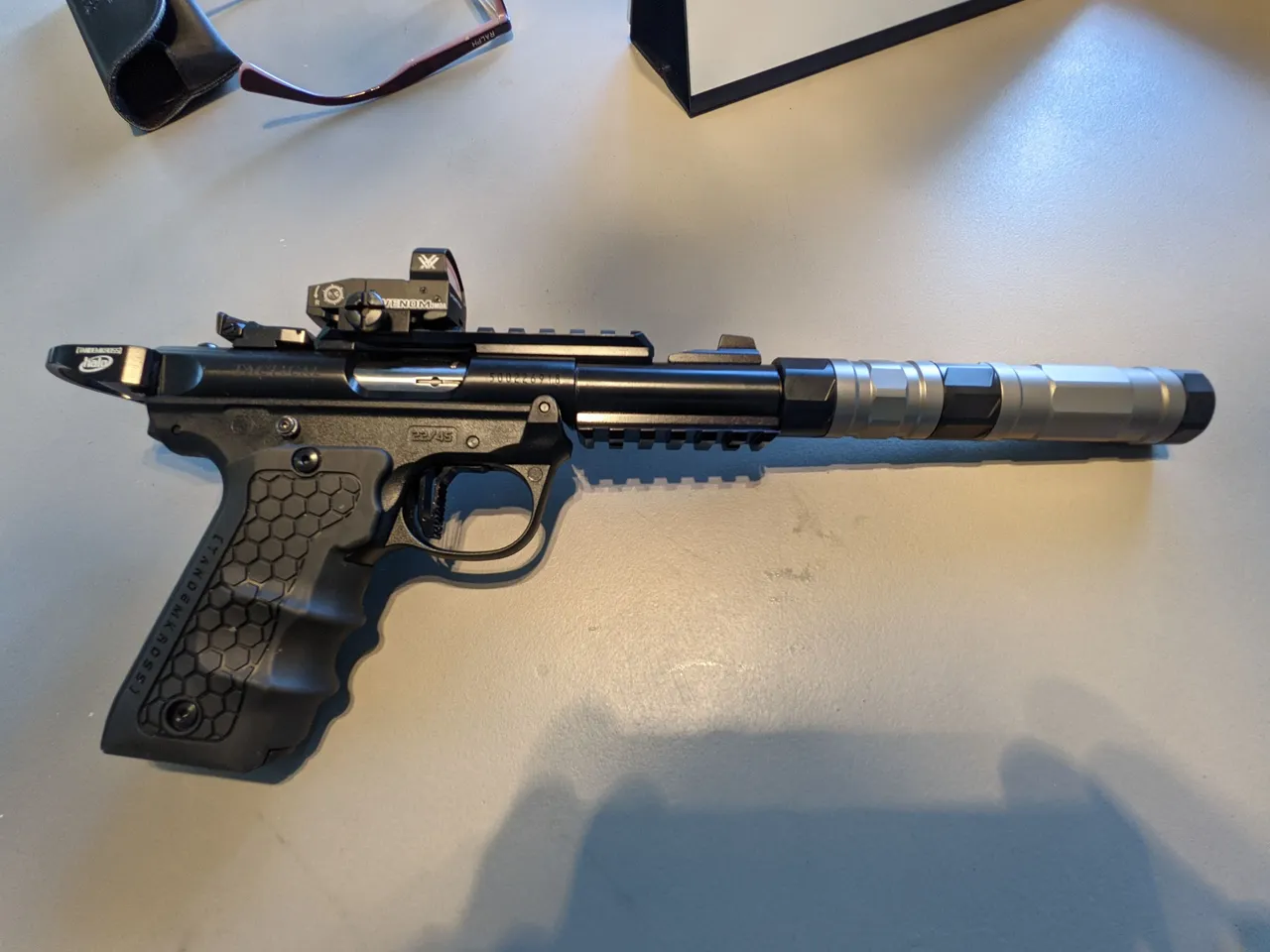
Often mistakenly called a "silencer" it does not make shooting a firearm silent. Nope, not even a pellet gun as you may have seen in some of my other video clips. What it does do is "Suppress" the noise to a reduced level. For most normal handguns and rifles, down to a level where hearing protection such as ear muffs are no longer required.
This has many benefits. The biggest benefit being that you don't need to wear hearing protection to shoot. While more pleasant for the shooter when target shooting or plinking, it's very valuable for hunting so it doesn't affect the shooter or guides / companions ears. It's also great for not disturbing the neighbors (unless you live 5 miles or more in the boonies, where full loud shots wouldn't matter).
While a suppressor can reduce the noise to a certain degree in nearly all firearms and ammunition, it is most frequently combined with "subsonic" ammunition. Subsonic means the projectile is traveling slower than the speed of sound. Breaking the sound barrier is what causes the loud "crack" associated with higher power rifles and handguns.
The speed of sound varies, it is faster through solids and water, and even the air temperature causes a variation (faster in hotter air). Generally speaking the Speed of sound is considered about 1,125 fps (feet per second), = 343 metres per second, = 767 mph = a kilometre in 2.9s, or a mile in 4.7 seconds.
Subsonic ammunition is generally manufactured to around 1,050 fps or below in order to account for temperature variations. Handloaders can tweak their ammunition to push it closer, or allow for even more leeway to ensure the sound barrier is not broken. The length of a barrel also affects the velocity. For example, very often .22 Rimfire ammunition designed to shoot 1,250fps (over the sound barrier) sounds the same as subsonic (800-1,050fps) ammo when shot through a pistol, because the shorter barrel never allow the projectile to actually reach the advertised 1,250 fps velocity. Measuring velocity over a chronograph is a great way to determine what your firearms actual velocity is.
For the curious technical folks, here is the suppressor specs:
SilencerCo Switchback .22
Calibers supported: 22LR, 17 WSM, 17 HMR, 22 MAG, 22 WMR, 22 HORNET, 5.7 X 28 MM
(Rated for full auto fire).
Convertible to 4 different modes:
Short, Medium, Long, and Long (Rifle Optimized)
The Rifle Optimized mode allows for some of the baffles to be reversed, and improve the sound reduction even more for longer rifles.
Pistol is a Ruger MKIV .22/45 with custom grips, Vortex Red Dot sight, Halo charging handle, Tandem Cross Trigger mods, and custom internal springs to reduce trigger pull. (Yes, this was also a bucket list item).
Rifle is a Ruger 10-22 with custom Volquartsen barrel, Boyds-AT One stock, Vortex 5-25x56 scope, Atlas Bipod, and also custom trigger work. See previous posts for reviews.
Anyway, lesson over. Here are some pics to show off the looks.
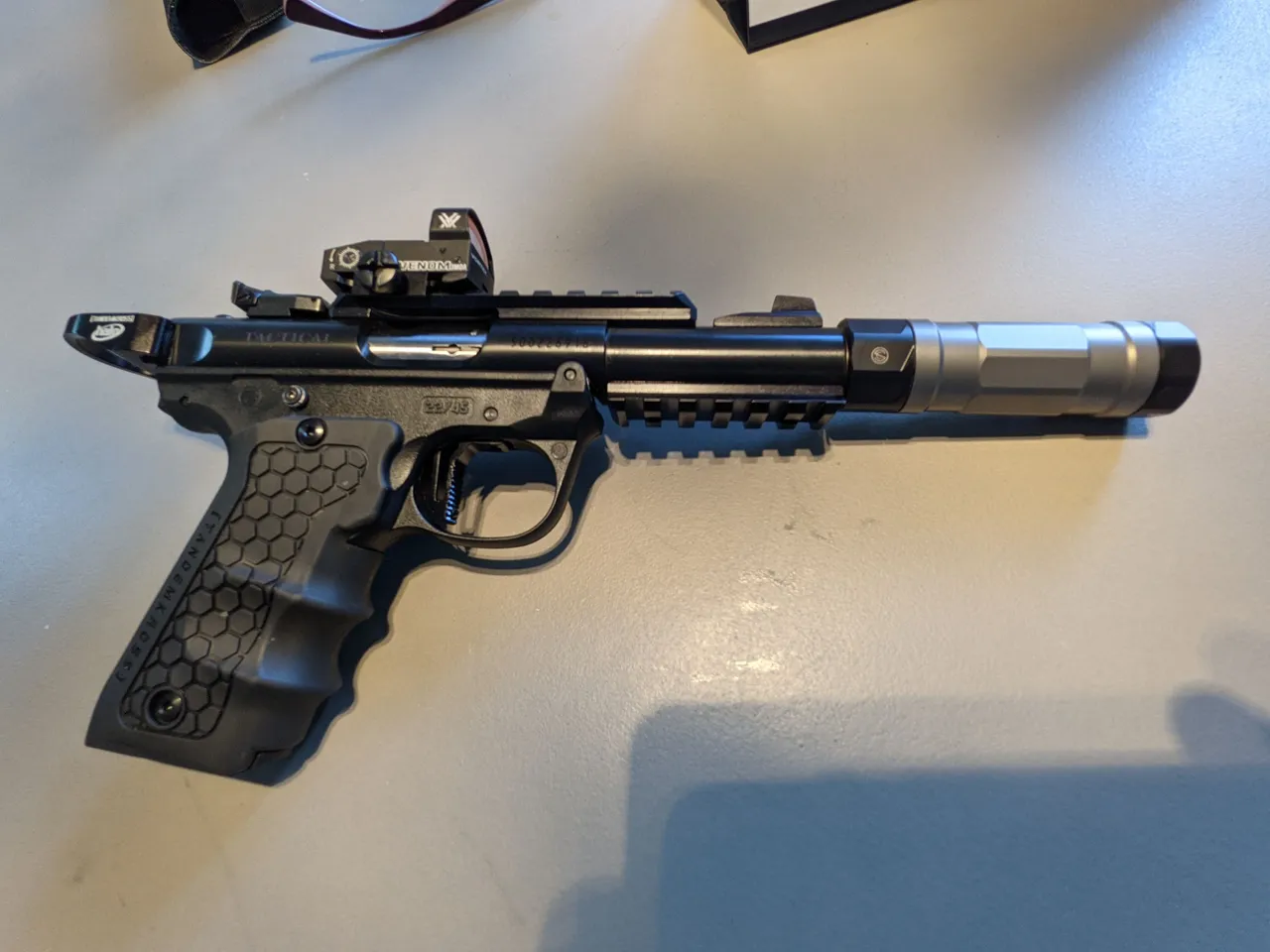
This is the Medium length configuration. I think this is my favorite looks wise, just need to test more to ensure that sound is reduced adequately.
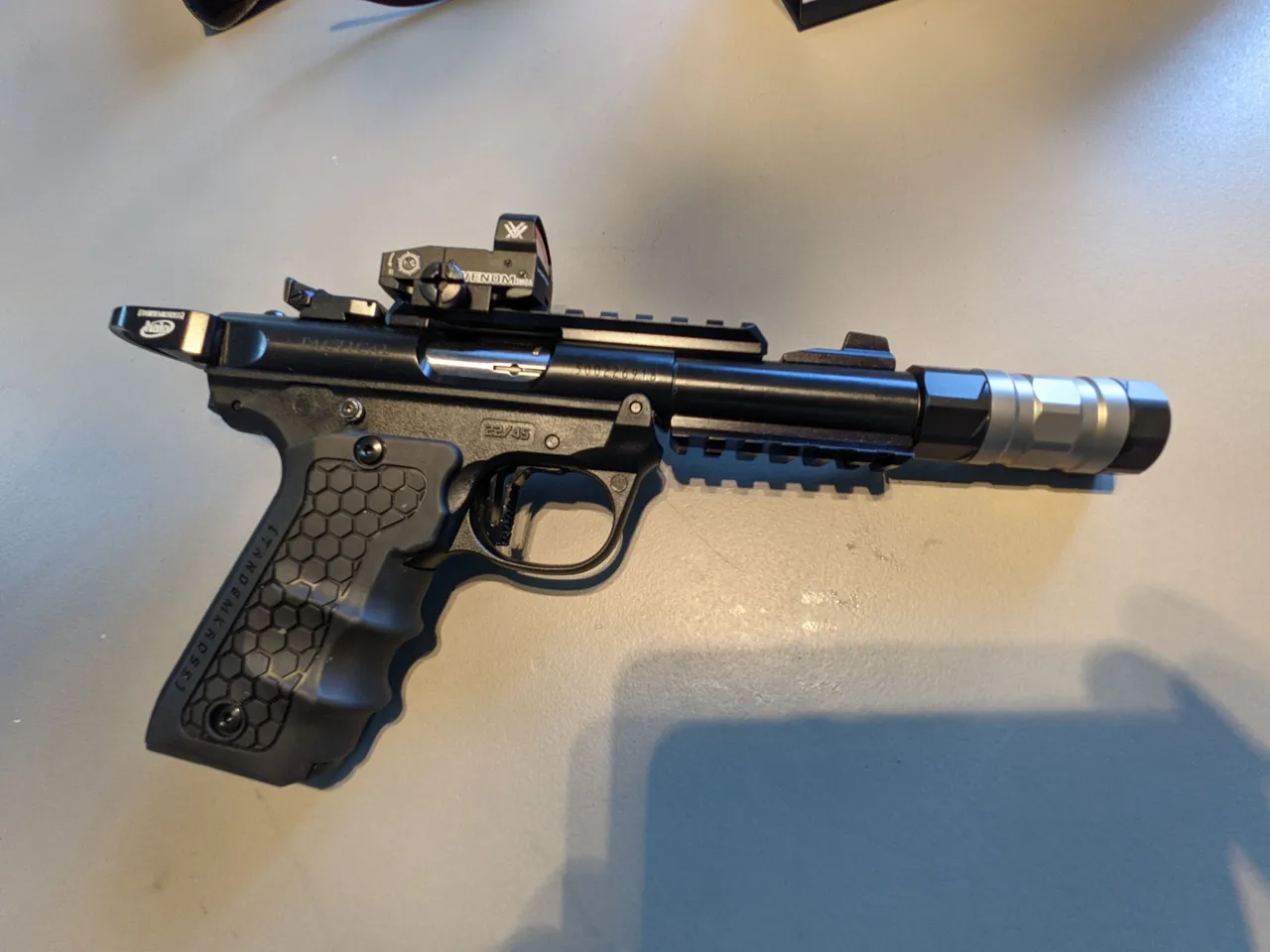
This is the small config view. Not confident that this will quiet effectively to the level I am looking for. But could be useful on little "pocket" subcompact weapons.
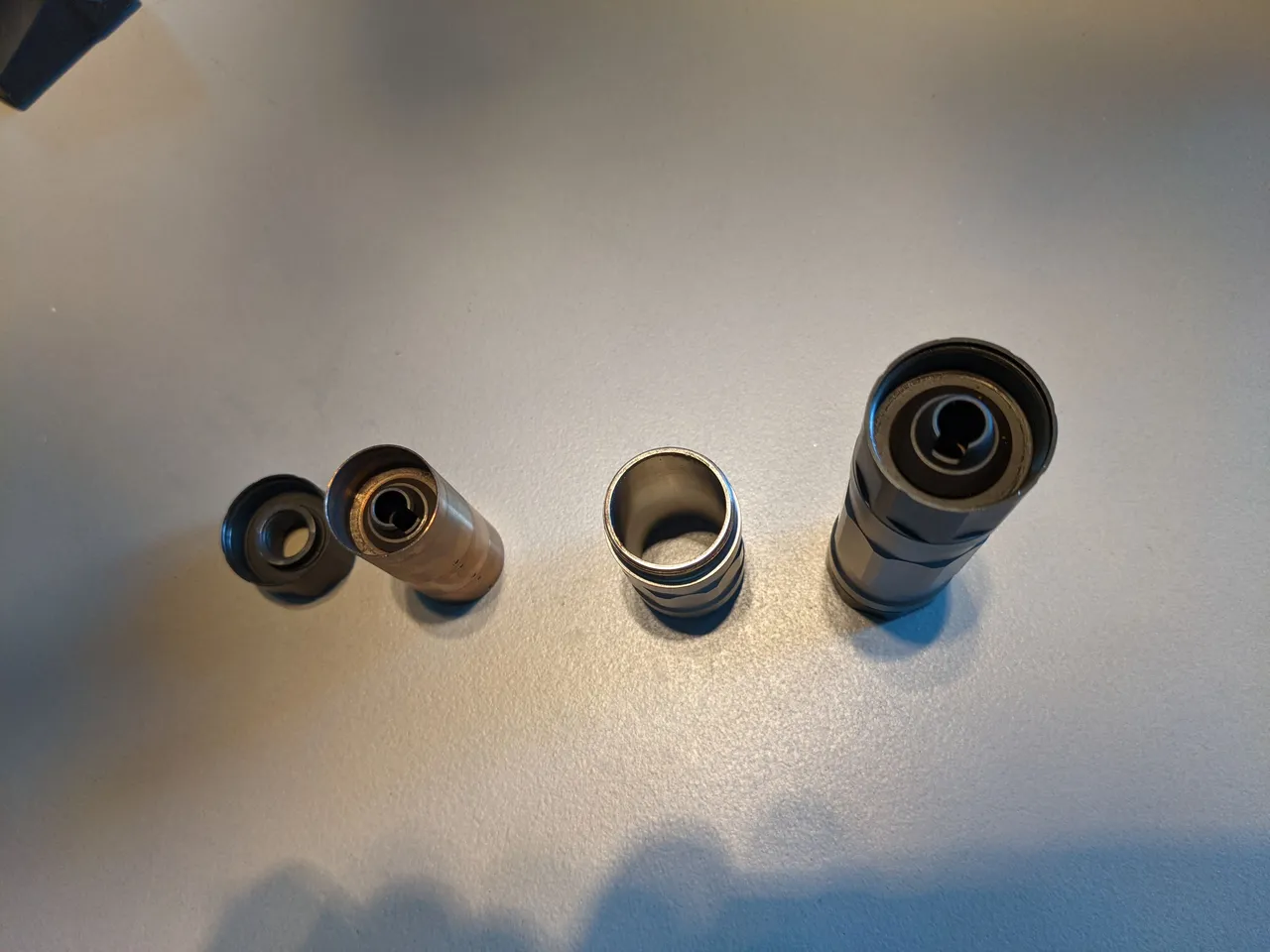
This is a shot of the internal baffles, which can be adjusted for the super quiet rifle mode, or removed for easier cleaning.
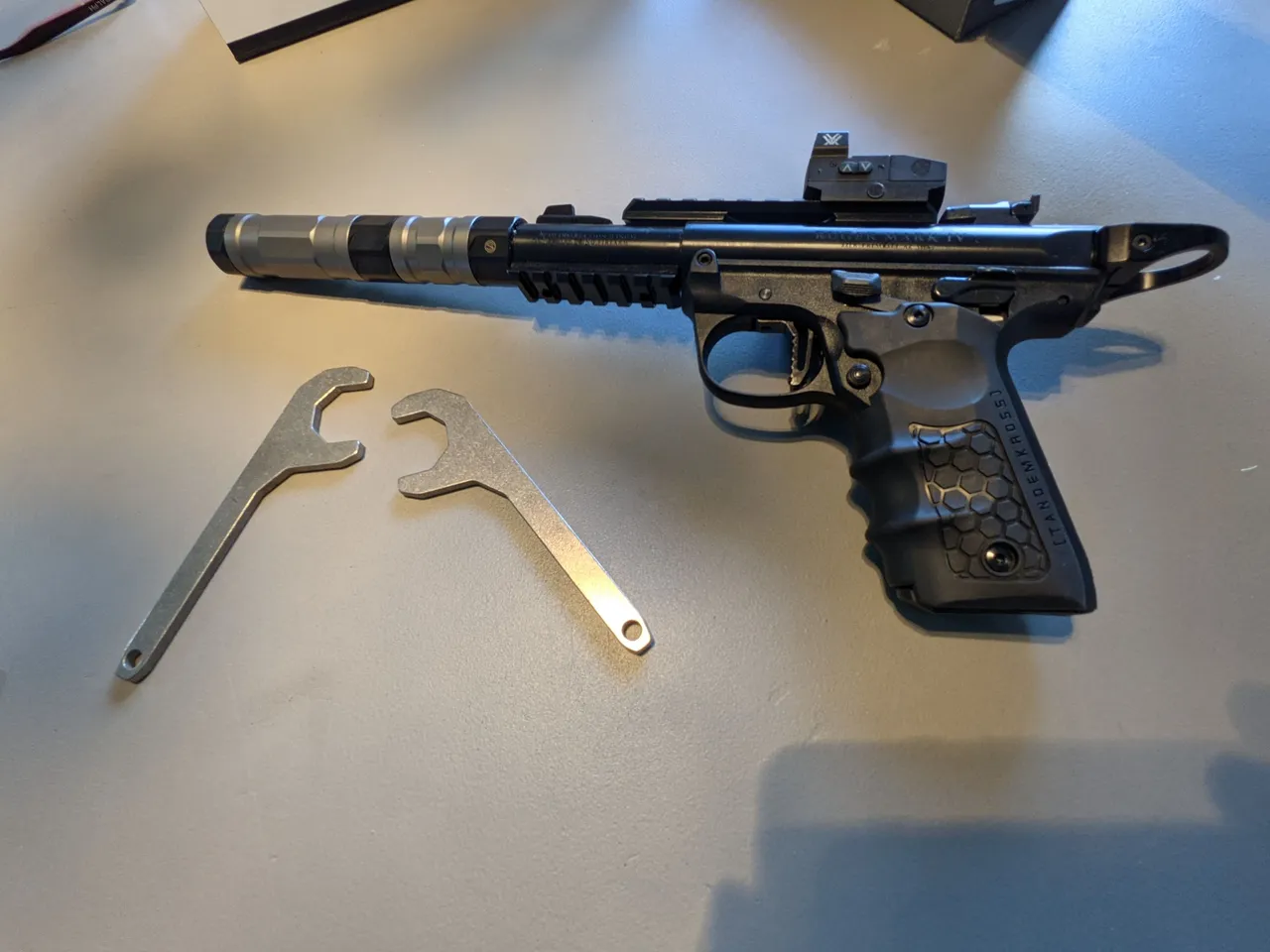
Here is a view from the other side, with a picture of the spanners included with the suppressor. Sometimes the carbon buildup and residue can make the parts a little difficult to unscrew. A nice touch for them to include these in the package.
And not to be left out. Here's a couple pictures of it on the rifle. Just have simply unscrew from one and onto the other. (Unless switching the baffles into or out of "extra-quiet mode".

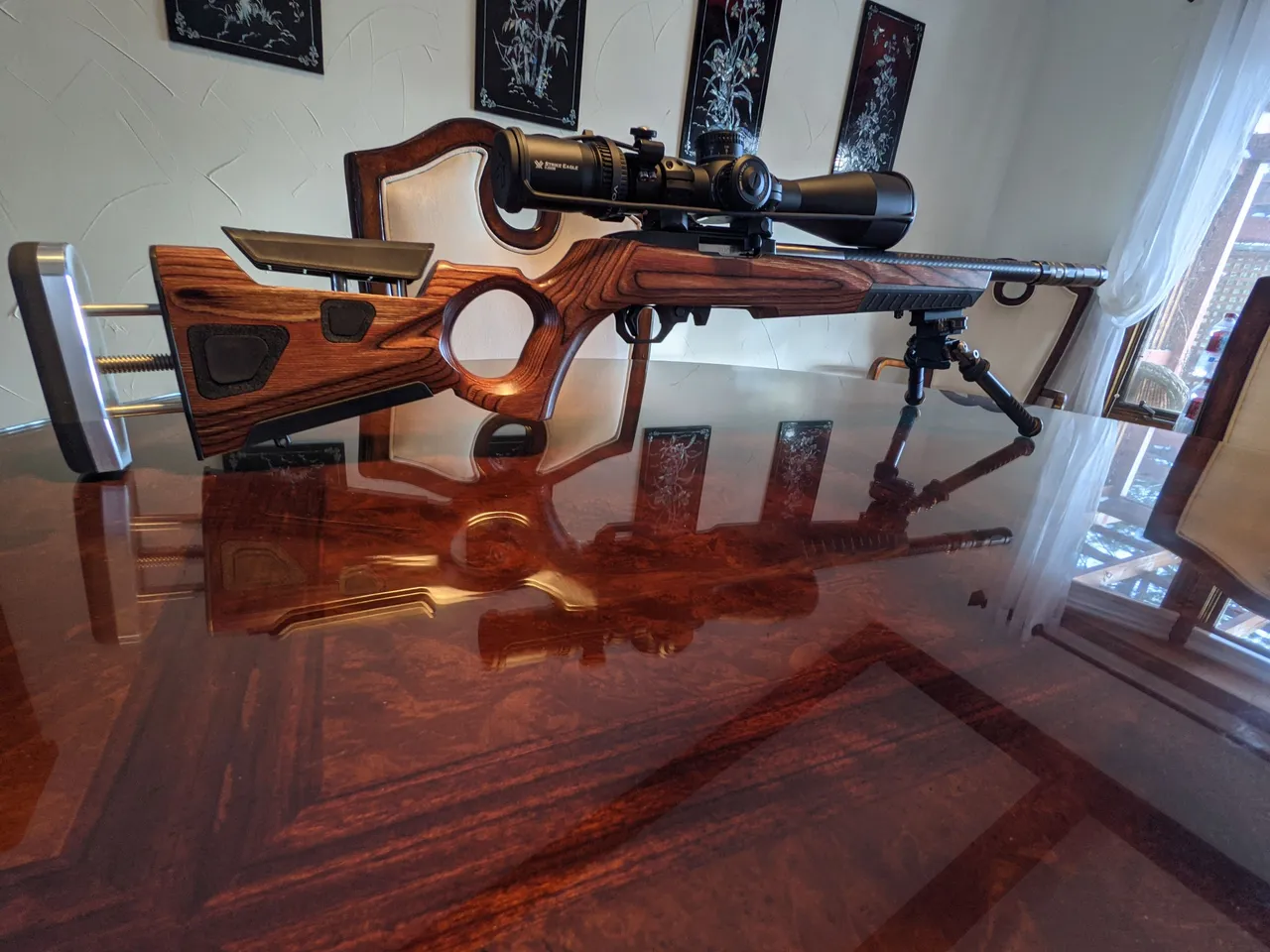
Now just need some time to get out to the range (or the yard!) and do some sound testing.
Enjoy
@ksteem
